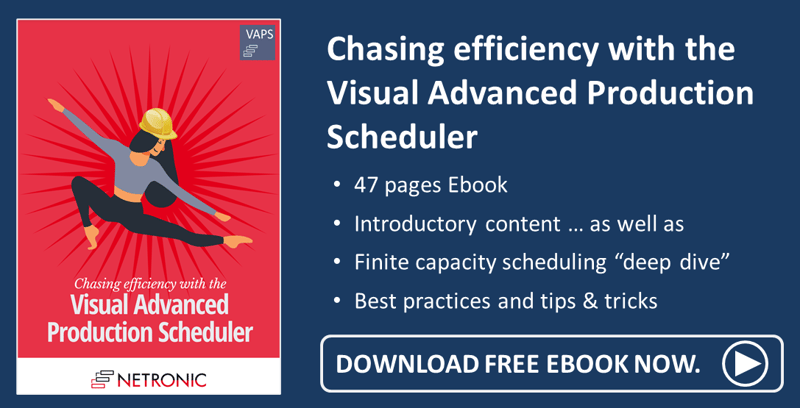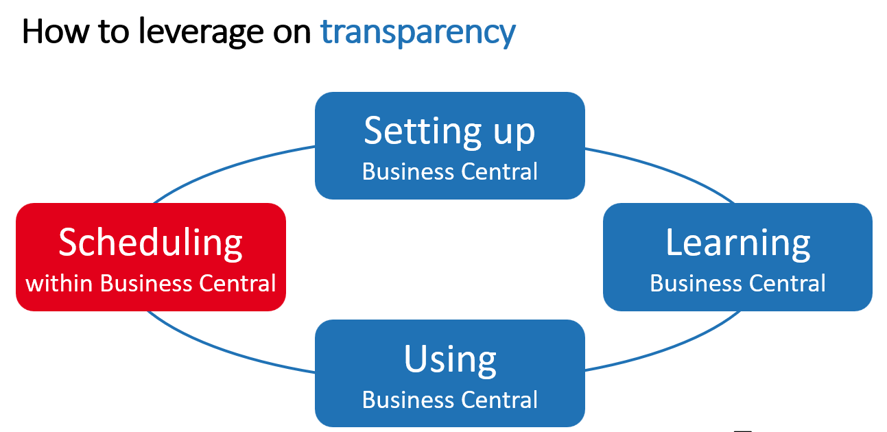In March, Martin hosted a webinar about "How manufacturers can leverage on transparency & simplicity with Business Central". With this blog, I'd like to give a summary of the webinar for all of you who weren't able to attend.
I also include the recording of the webinar and provide links to the respective minute of the presentation.
Four areas where a visual scheduling product can help gaining transparency [min 2:28]
After some preliminary words, Martin briefly introduced our two extensions, the Visual Production Scheduler (VPS) and its bigger brother, the Visual Advanced Production Scheduler (VAPS), and explained where the sources for transparency are when you deal with such a visual scheduling product. He then identified four areas:
Area 1: leverage on transparency while setting up BC [min 5:24]
Martin started with the VPS, as the VPS is the drag & drop front end to standard Business Central manufacturing allowing to do everything you can do with Business Central. The VPS is not only about scheduling but also makes the master data and transactional data within the manufacturing capabilites of Business Central visible. From this results the logical recommendation of installing the VPS before setting up Business Central. While setting up your ERP, i.e. items, routing, BOM - all the things that are essential to run manufacturing - look at them in the VPS and from looking at them, understand what you just set up. In this phase, Martin recommends to not use the VPS for scheduling but use it as tool to make your BC settings visible.
From minute 15:53, Martin underlined what was said in the live environment of the VPS with the example of two ways of setting up the same routing.
The first, more complex one, is set up in a way, that it includes work instructions having their own operations, which, of course, is not wrong in itself. Only when you visualize this routing, it becomes clear that this is not the final wisdom:

The below picture shows basically the same routing but without the work instructions that in turn have been placed in the comments. Now the routing is much easier to understand and handle.
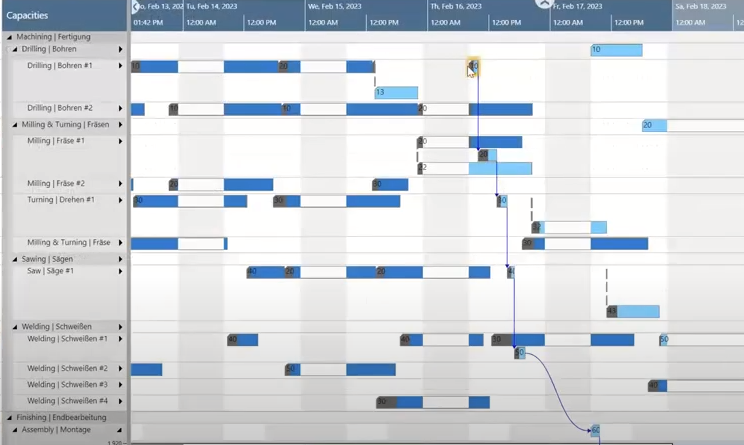
This example showed some of the things you would never recognize when you set it up without a visual scheduler and that you can leverage this power of seeing what you are setting up with a visual scheduling tool.
Area 2: leverage on transparency while learning BC [min 25:00]
While learning Business Central, a tool like the VPS can also help a lot. For this phase, the recommendation to not use the VPS for scheduling but use it for changing and learning Business Central manufacturing so that you understand what is happening in the system remains unchanged You shold try out, e.g., what happens to the Business Central due date, if you change dates on routing lines and what happens in this case to the requested delivery dates on the sales order (if the production order was made from a sales order).
The benefits of visual planning in the learning phase were illustrated by the example of what happens to a released production order that was planned for tomorrow but - for whatever reasons - was started today (meaning you e.g. post consumption today).[min 29:07]
The example showed that if you post something in the present that was planned for the future, Business Central will not change the routing. In the picture below, you can see a finished operation (indicated by the small black bar below the operation) with two unfinished preceeding operations (the good thing is that it consumes no capacity, as you can see in the histogram).
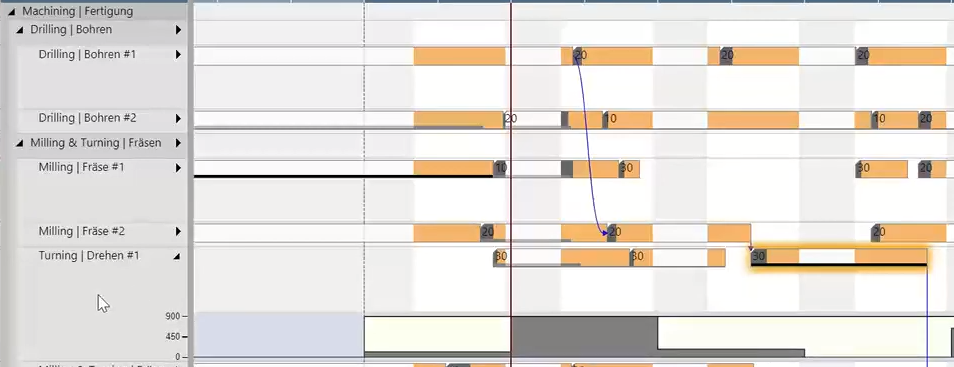
Area 3: leverage on transparency while using BC [min 33:22]
Once you know what you see in the VPS and know how to interpret the data and which data changes (and where) in the VPS when you change Business Central data, you can benefit from the gained transparency while using the ERP. For this phase, Martin enhanced his recommendation: use the VPS to determine how you want to use Business Central. The picture below gives some examples for this area:
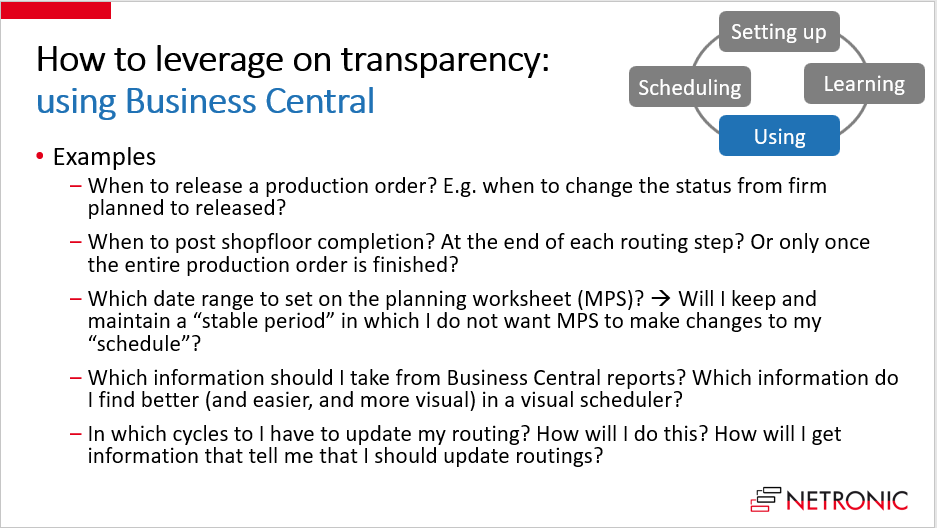
Area 4: leverage on transparency while scheduling within BC [min 42:08]
For this area, Martin recommends to define and establish scheduling processes so that you have a clear idea of
- what you want to achieve when scheduling
- when, how, and how often to schedule
The first live example [min 43:47] discussed the question of when it makes sense to plan on workcenter level first and then have someone decide when and where to work on this production order, depending on the free capacities that can be recognized at first glance in the plan.
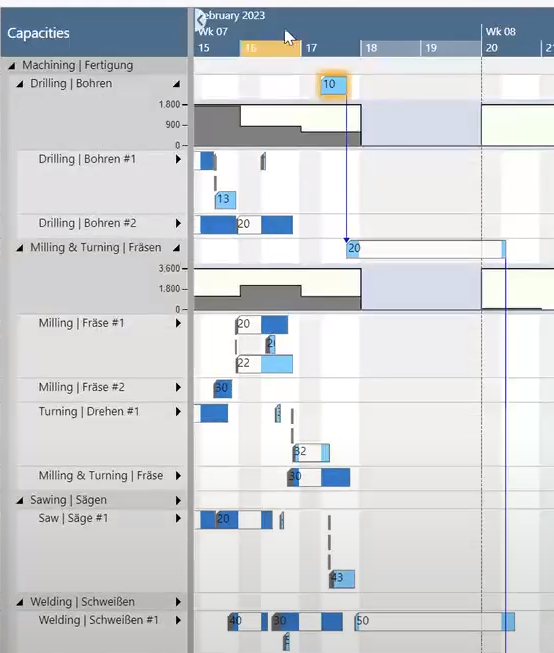
The second live example showed how the information given in the plan can be adjusted to individual scheduling needs, e.g. the label shown on operations [min 47:00]:

How to leverage on simplicity [min 50:27]
Martin then shared his two insights about gaining simplicity in BC:
-
The positive side effect of transparency is simplicity so that gaining transparency with a visual scheduling tool like described before also makes scheduling simpler.
-
Even more simplicity can be gained by simplifying the scheduling processes, meaning automating them.
To illustrate these ways of automating processes, Martin switched to the VAPS and showed how new production orders can be added automatically to the schedule – ideally taking into account the current capacity utilization (aka finite capacity) [min 54:58].
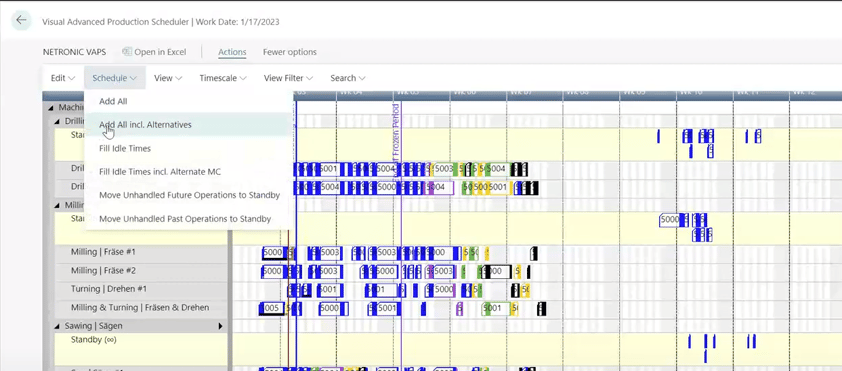
Further information
- Watch the recording of this webinar
- Book a free demo with a VAPS or a VPS specialist.
- Get your free copy of our comprehensive eBook:
